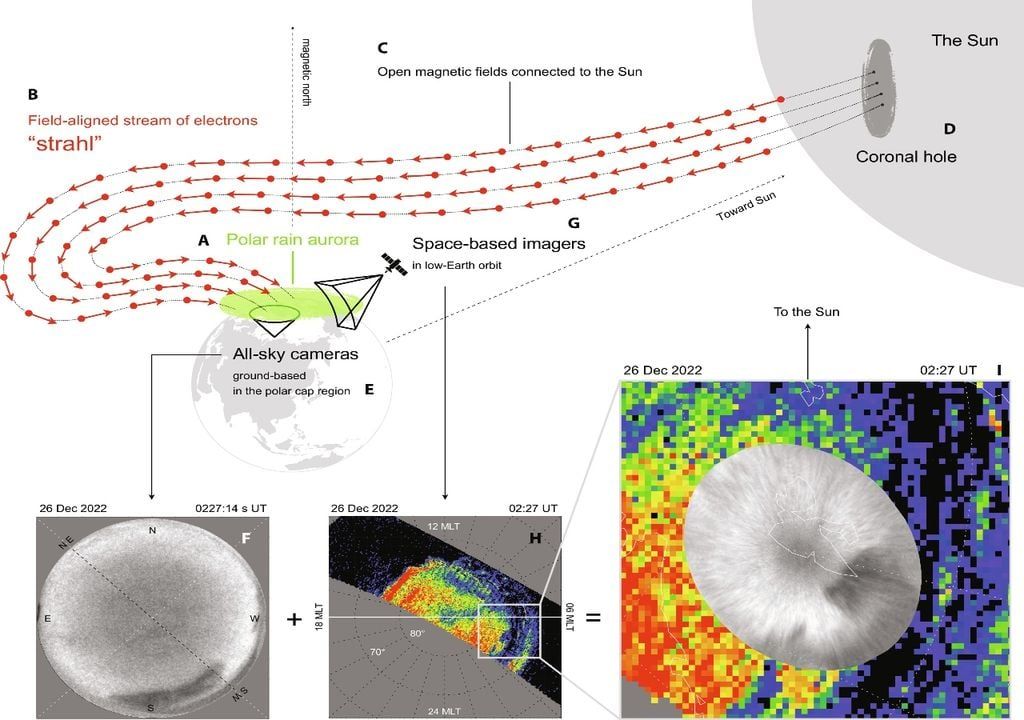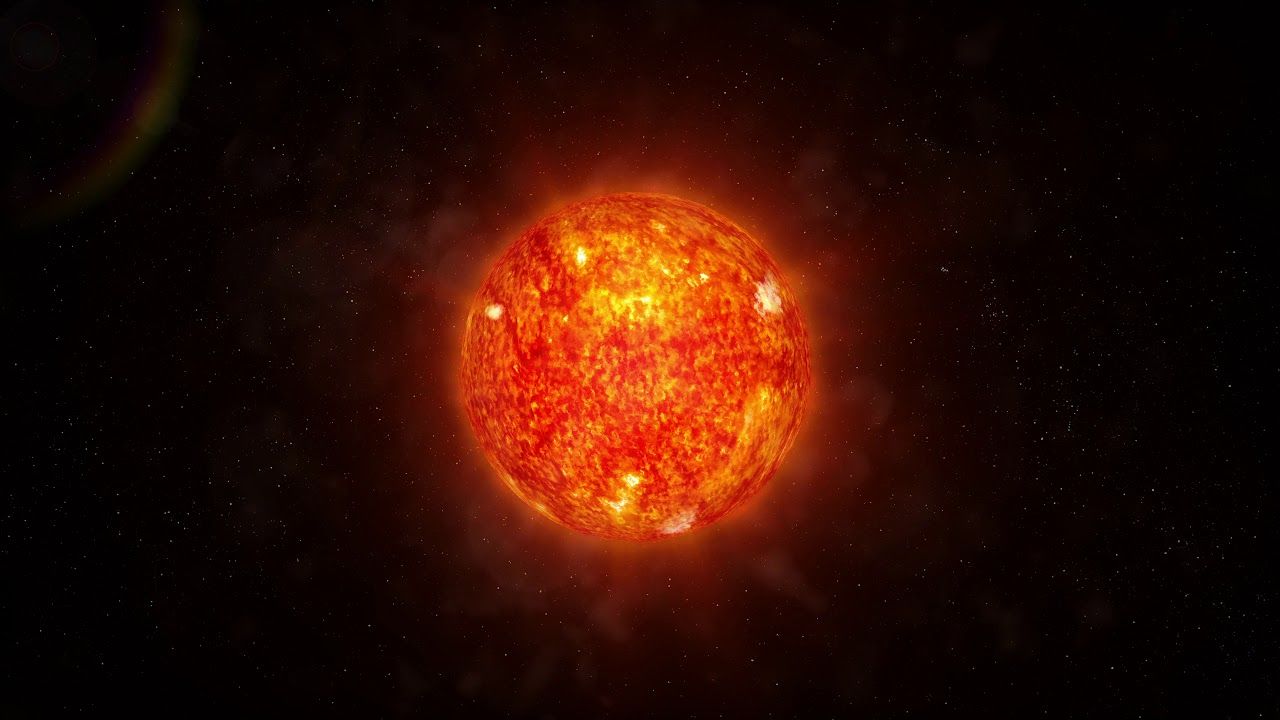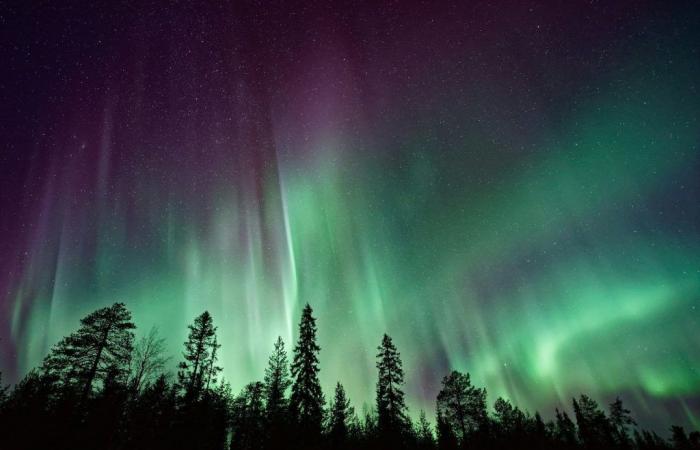The event in question happened on Christmas night 2022. That night, an enormous aurora illuminated the sky for thousands of kilometers around the North Pole, as recounted NatureBut it wasn’t just another aurora, because the light show offered scientists a unique glimpse of the elusive and rare “polar rain aurora.” This rare glowing phenomenon forms when energetic electrons from the Sun cascade down onto Earth’s polar regions..
For polar rain auroras to occur, the solar wind needs to be minimal, something that is not common. This event that occurred on Christmas 2022 is now part of an extensive study recently published.
In general terms, Auroras form when charged particles streaming from the Sun collide and interact with the Earth’s magnetic field.. Their energy is often transformed into luminous spectacles of dancing green curtains, towering red pillars, or other spectacles like those that dazzled sky watchers around the world last May. The more intense the solar flares are, the farther from the poles the auroras can be observed.
But polar rain auroras are a special type that is very rare to see.. It is formed when electrons traveling directly from the Sun’s corona, or its outermost atmosphere, collide with the Earth’s atmosphere. These auroras are rare because there are rarely enough electrons hitting the atmosphere to generate a glow. And other types of charged particles often interfere with these electrons, preventing polar shower auroras from forming.
A unique dawn
But the December 2022 event was unique. For 28 hours, the flood of other solar particles that make up the solar wind slowed to a trickle.. Electrons from the polar shower fell unhindered to Earth, creating a greenish glow that extended more than 3,000 kilometers across the North Pole.

According to Keisuke Hosokawa, a space physicist at the Tokyo University of Electrocommunications cited by Nature and who led the team that published this discovery in Science Advances, “Anyone looking up that night in the Arctic could have seen it. Unlike the curtains and pillars of light of normal auroras, this auroral glow spread across the sky.”
lIt took time to analyze the information collected two years ago, and finally on June 21, the result of the investigation was published. Scientists have already occasionally detected polar shower auroras, but it has been from satellites that observe the poles from above. Since 2011, Hosokawa has had a robotic camera pointed at the sky over the Norwegian islands of Svalbard in the Arctic Ocean, hoping to capture the first polar lights from land. Finally his desire was achieved.
The wait paid off
The researcher didn’t know about the event until January 2023, when he examined data from about three weeks earlier. The aurora of that period stood out for being “very different” from other types of aurora., he later stated. After watching his camera recording, Hosokawa then checked images of the polar regions taken by US military weather satellites. In them, he saw that the auroral glow occupied almost the entire northern polar cap.

In recent decades, satellites have detected small-scale polar auroras, but the most recent observation of a large aurora occurred in May 1999, he told Nature, when the solar wind also temporarily diminished. According to Yongliang Zhang, a co-author of the study and a space physicist at the Johns Hopkins University Applied Physics Laboratory in Laurel, Maryland, Studying polar shower auroras could help scientists understand how the solar wind interacts with Earth’s magnetic field.
Because these types of auroras are so elusive, much analysis now lies ahead to gain more information. High-sensitivity ground-based images have visualized complex spatial structures in the polar rain aurora that possibly manifest the internal pattern of the solar wind or even the organizations in the Sun’s chromosphere.The information provided by satellites is very useful, but having high-quality filming of the entire event allows for better conclusions..
News reference:
Keisuke Hosokawa et al. ,Exceptionally gigantic aurora in the polar cap on a day when the solar wind almost disappeared.Sci. Adv.10,eadn5276(2024).DOI:10.1126/sciadv.adn5276





